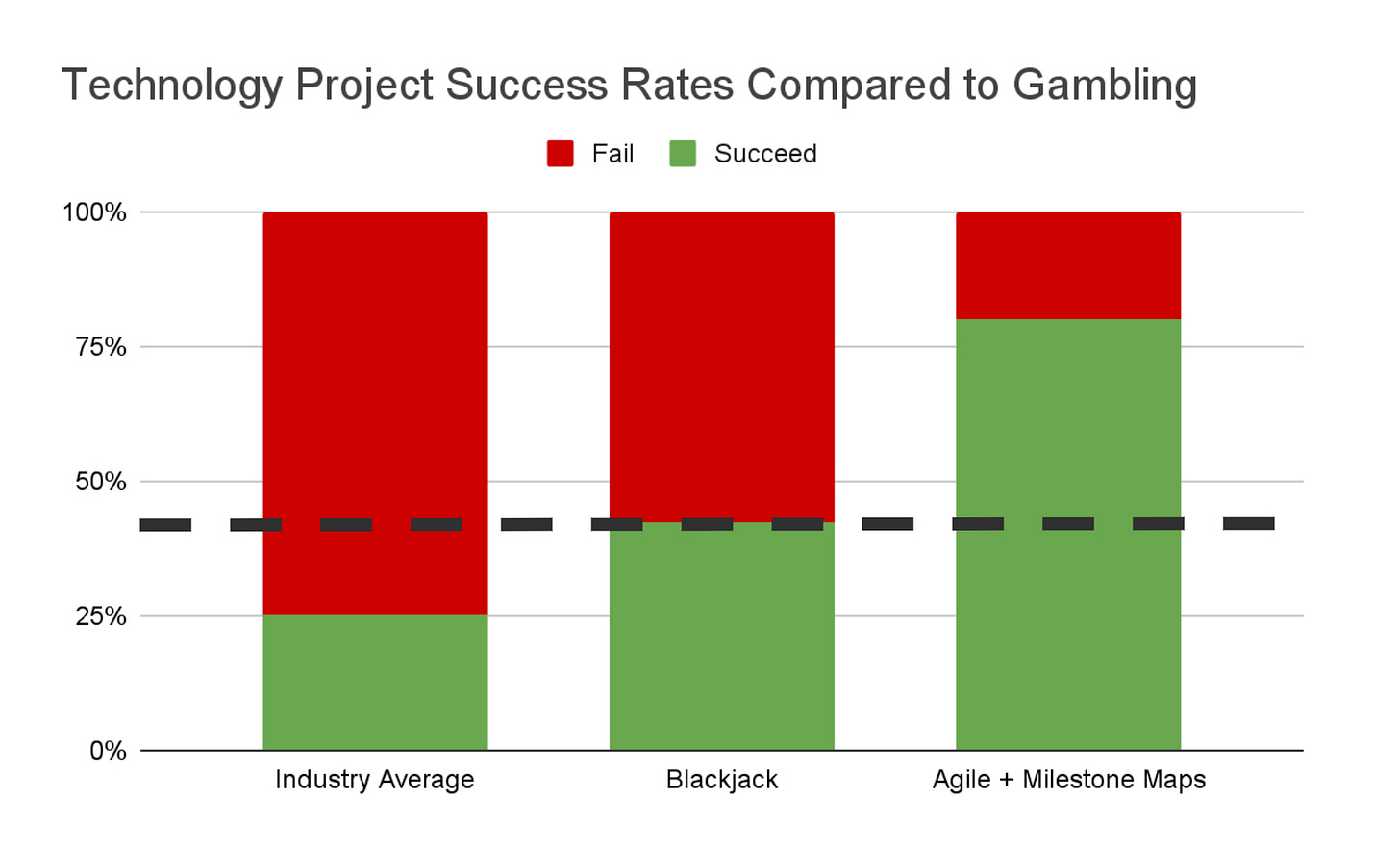Government organizations that practice Agile with milestone maps are 3 times more likely to deliver successful outcomes
Big projects without an achievable definition of “success” fail before they start. There are a lot of big projects in government that require contributions from many teams, sometimes across multiple departments and employers. When success depends on this many people, it’s critical that each team understands what success looks like and what they need to contribute to it. But this level of clarity is rare on large government initiatives, and this is surely one of the reasons only 20-30% of large projects succeed. Milestone maps connect the dots between a big project’s intended outcomes, team-level contributions, and rapidly evolving plans. And projects that use them have much higher success rates.
Across 116 technology projects that used milestone maps during my tenure as Chief Digital Officer for Massachusetts, 80% were successful. That’s three to four times higher than industry averages I often see cited, and six times higher than Beeck Center’s stats here. Perhaps more significantly, I personally helped three high-profile, multi-team, multi-department initiatives go from overwhelmingly “red” (mostly or totally failing) to overwhelmingly “green” and used milestone maps to guide the turnaround. This is why I’m certain we weren’t just surfacing and visualizing initiatives that were already succeeding, but rather using milestone maps to introduce impactful improvements. And this is why Massachusetts Digital Service continues using them today without me.
Milestone maps are a game changer for large scale Agile project management in four ways:
Simplifying oversight and strategic direction for executives and senior managers
Preventing people from starting projects that are destined to fail
Providing empirical feedback on where to invest more and where to stop investing
Improving transparency so adjustments are smaller, faster, and less costly
Here’s the TLDR for the links above if you don’t want to read four more blog posts:
A fleet needs an admiral
Don’t set sail without a destination
Don’t invest in sinking ships
The whole fleet needs to check the GPS regularly to stay on course
If you’d like to try making a milestone map or bringing this approach into your organization check out the info here.

